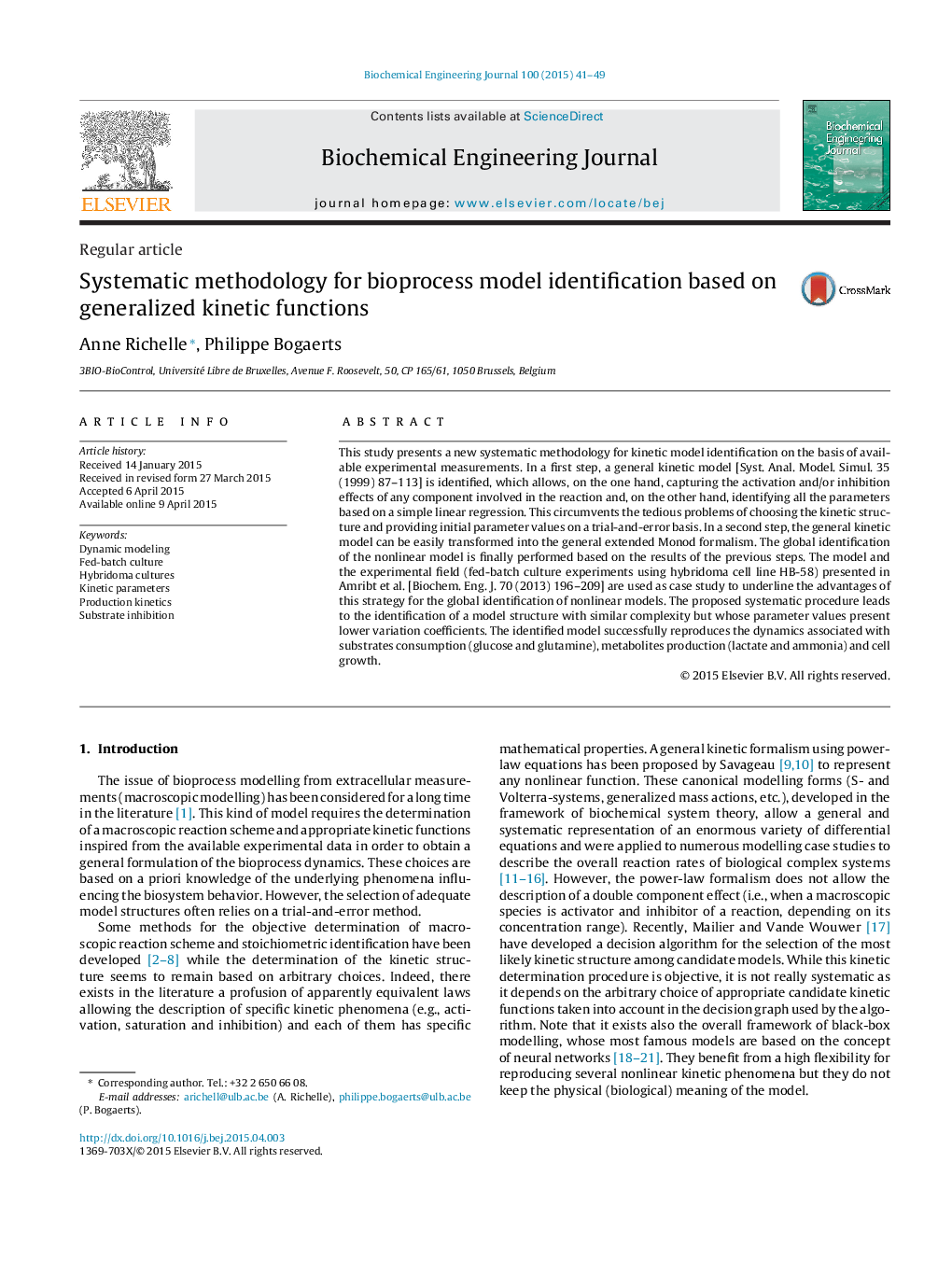| Article ID | Journal | Published Year | Pages | File Type |
|---|---|---|---|---|
| 2893 | Biochemical Engineering Journal | 2015 | 9 Pages |
•This study presents a new systematic methodology for kinetic model identification.•An existing model and its associated experimental field are used as case study.•This approach allows a computation time reduction compared to usual model identification.•The identification results underline the efficiency of the proposed procedure.
This study presents a new systematic methodology for kinetic model identification on the basis of available experimental measurements. In a first step, a general kinetic model [Syst. Anal. Model. Simul. 35 (1999) 87–113] is identified, which allows, on the one hand, capturing the activation and/or inhibition effects of any component involved in the reaction and, on the other hand, identifying all the parameters based on a simple linear regression. This circumvents the tedious problems of choosing the kinetic structure and providing initial parameter values on a trial-and-error basis. In a second step, the general kinetic model can be easily transformed into the general extended Monod formalism. The global identification of the nonlinear model is finally performed based on the results of the previous steps. The model and the experimental field (fed-batch culture experiments using hybridoma cell line HB-58) presented in Amribt et al. [Biochem. Eng. J. 70 (2013) 196–209] are used as case study to underline the advantages of this strategy for the global identification of nonlinear models. The proposed systematic procedure leads to the identification of a model structure with similar complexity but whose parameter values present lower variation coefficients. The identified model successfully reproduces the dynamics associated with substrates consumption (glucose and glutamine), metabolites production (lactate and ammonia) and cell growth.
